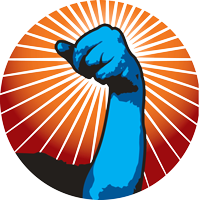“I just can’t stand the thought of our little Psarah being laughed at.” That was the rationale offered by Mrs. Bennett when asked why she had refused to cast me in the jr. high school play. Having been born with a very visibly obvious physical disability I was accustomed to this brand of benevolent erasure. I had seen it in the eyes of strangers that would stare at my deformities while simultaneously refusing to make eye contact or return my smile when I demanded they see ME and not just the disability. I heard it from the parents as they hurried their children away instructing them “don’t look at her” and “it’s not polite to stare.” As if ignoring my disability was somehow an act of kindness that took it away; “cured” me instead of a malevolent attempt to erase me entirely from society.
So in 1989, just one year before the passage of the Americans with Disabilities Act, as I failed to find my name on the cast list I got the message loud and clear: “Ain’t NOBODY want to see THAT!” And yet I wanted nothing more than to be seen, yearned to be laughed at. It was the reason I had chosen to audition for the role of Dr. Einstein in the comedy Arsenic and Old Lace. I spent hours prepping for my in-class audition. I had perfected my Peter Lorre-esque delivery, had revamped the comedic timing until I felt it was perfect. The payoff? A standing ovation from my classmates. The two guest judges wanted to give me the role. Even my direct competition for the role preemptively congratulated me. The sole voice of dissent and the final decision fell to Mrs. Bennett. When pressed for what she had meant in not giving me the role she stated, “it’s her deformities. I just can’t stand the thought of our little Psarah being laughed at.”
30 years later, we sit on the eve of a new decade and disabled folks are still screaming to be heard and our press is complicit in silencing us. Across the nation media outlets are celebrating the amazing advances this past decade has seen: highlighting the most influential movements, celebrating the firsts, the pioneers, the innovators. Yet glaringly missing from these stories is any individual mention of disability or the disabled activists that have shaped the past decade. Where is the celebration of Tammy Duckworth the first disabled woman elected to Congress? Ali Stroker: the first actress in a wheelchair to win a Tony and the first woman to introduce us to the idea that disabled folx can be seen as “normal people.” And where did she await the announcement of this pivotal moment? Amongst her peers in the auditorium? No. From the shadows backstage at the grand Radio City Music Hall. Known for it’s innovative design in accommodating grandiouse and complex scenery changes, this historic stage failed to accommodate one single wheelchair.
Where is the mention of Alice Wong’s Disability Visability Project or Leroy Moore’s KripHop Nation, two projects that aim to not only tell the stories and celebrate the talents of disabled folks but ensure that those stories and talents feature us and not abled actors like Bryan Cranston, Eddie Redmayne, Sallie Hawkins and Scarlett Johansen. In an age when James Cameron can win an Oscar for Avatar we can’t green screen some ambulatory legs on to a quadriplegic actor allowing him to play Steven Hawkins?
Why are we not celebrating organizations like ADAPT, Not Dead Yet, Rooted in Rights and ASAN: organizations founded by and for disabled folx? These groups, and countless others, spent the past decade fighting to protect the ACA from repeal, expand Medicaid coverage across the nation and end the institutionalization of disabled folks. At one such rally to protect the ACA a news reporter refused to interview me or my colleague Barbara Toomer despite the fact the two of us were listed on press releases as the organizers and media spokespeople for the action. Every person he asked to interview was abled and when these abled allies directed him to a disabled spokesperson he moved on to another abled ally.
Yes, 30 years after the passage of the ADA we still have things decided for us about us, instead of for us BY us. Yes, the media is complicit in our full erasure and, through their unwillingness to feature us, they are helping to further stigmatize us, allowing violence and bigotry against us. It is time the media change the narrative surrounding disability and the place to start is by agreeing to celebrate us, photograph us, cast us. It is time we take our own stories back from abled actors who are heralded as “brave” for portraying disability. Time to rip our stories out of the hands of ableist producers who would fetishize us, infantalize us, portray us as weak, broken, inferior instead of celebrating our strengths, beauty and equal status in society.
